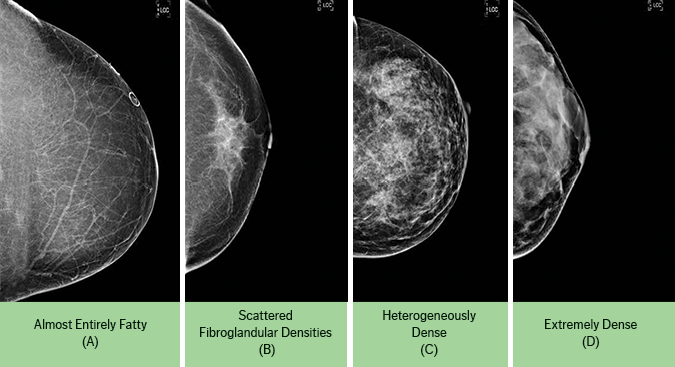Secondary Screening With ABUS Improves Cancer Detection in Dense Breasts
May 2, 2019Nearly half of all women 40 and older have dense breasts, making them more likely to develop breast cancer than women who do not, according to the National Cancer Institute, opens new tab. Asymptomatic patients with dense breast tissue may benefit from having an annual automated breast ultrasound in conjunction with screening mammography. North Kansas City Hospital, which is an American College of Radiology Breast Imaging Center of Excellence, offers both.

Detection
Breast MRI
If a patient falls into a high-risk category for breast cancer, they may benefit from North Kansas City Hospital’s breast magnetic resonance imaging. Breast MRI provides clearer images than those created by mammography or ABUS and requires a physician’s referral.
An observational, multicenter study published in Radiology, opens new tab in March 2015, “Assessing Improvement in Detection of Breast Cancer With Three- Dimensional Automated Breast Ultrasound in Women With Dense Breast Tissue: The SomoInsight Study,” found the addition of ABUS to screening mammography improved the detection of cancer.
The 2009-2011 study looked at 15,318 women ages 25-94 (mean 53.3 years) who presented for a screening mammography alone with heterogeneously (50%–75%) or extremely (>75%) dense breasts and were followed up for one year. Participants underwent screening mammography alone followed by an ABUS exam. Breast cancer was diagnosed at screening in 112 women: 82 with screening mammography and an additional 30 with ABUS.
“When breast tissue is dense, it makes it more difficult to detect breast cancer with mammography,” said Julia J. Neperud, MD, opens new tab, a radiologist with Northland Radiology and medical director of Women’s Imaging at NKCH. “This is because the higher breast density can obscure a cancer with just mammography alone. Both dense breast tissue and some abnormal breast changes, such as a tumor, appear white on mammography. This makes it harder to detect and differentiate a lesion from the dense breast tissue.”
With ABUS, radiologists can differentiate tissue and view tumors more clearly. “Just as mammograms and colonoscopies are vital screening tools, ABUS should be thought of as another tool for detecting cancer in women with dense breasts,” Dr. Neperud added.
ABUS, which requires a referring physician order, is:
- Recommended for patients with BI-RADS composition/density C or D (heterogeneously dense or extremely dense tissue)
- Considered a supplement to mammography
New Legislation
Scheduling
To schedule an ABUS screening for your patient at our Medical Imaging Center on North Oak or the Women’s Imaging Center on the hospital campus, call 816.691.5267.
Legislation signed into law in February requires mammography facilities to include information about breast density in mammography screening summary letters sent to patients and in medical reports provided to their referring physicians.
The Food and Drug Administration’s public comment period for that language concludes June 26, 2019. However, NKCH’s summary letters already follow the FDA’s proposed language, which seeks to provide women with standardized information. The FDA’s , opens new tabproposed specific language:
- Explains how breast density can influence the accuracy of mammography
- Recommends patients with dense breasts talk with their healthcare provider about high breast density and how it relates to breast cancer risk and their individual situation
Missouri is among 37 states that require some density notification. If finalized, all states would be required to abide by the FDA’s proposal for disclosing information.
Julia J. Neperud, MD
Dr. Neperud, opens new tab earned her medical degree from the University of Kansas School of Medicine and completed her residency in radiology at the University of Kansas Medical Center. She also has advanced fellowship training in body imaging with an emphasis in oncologic imaging and breast imaging from the University of Texas MD Anderson Cancer Center.